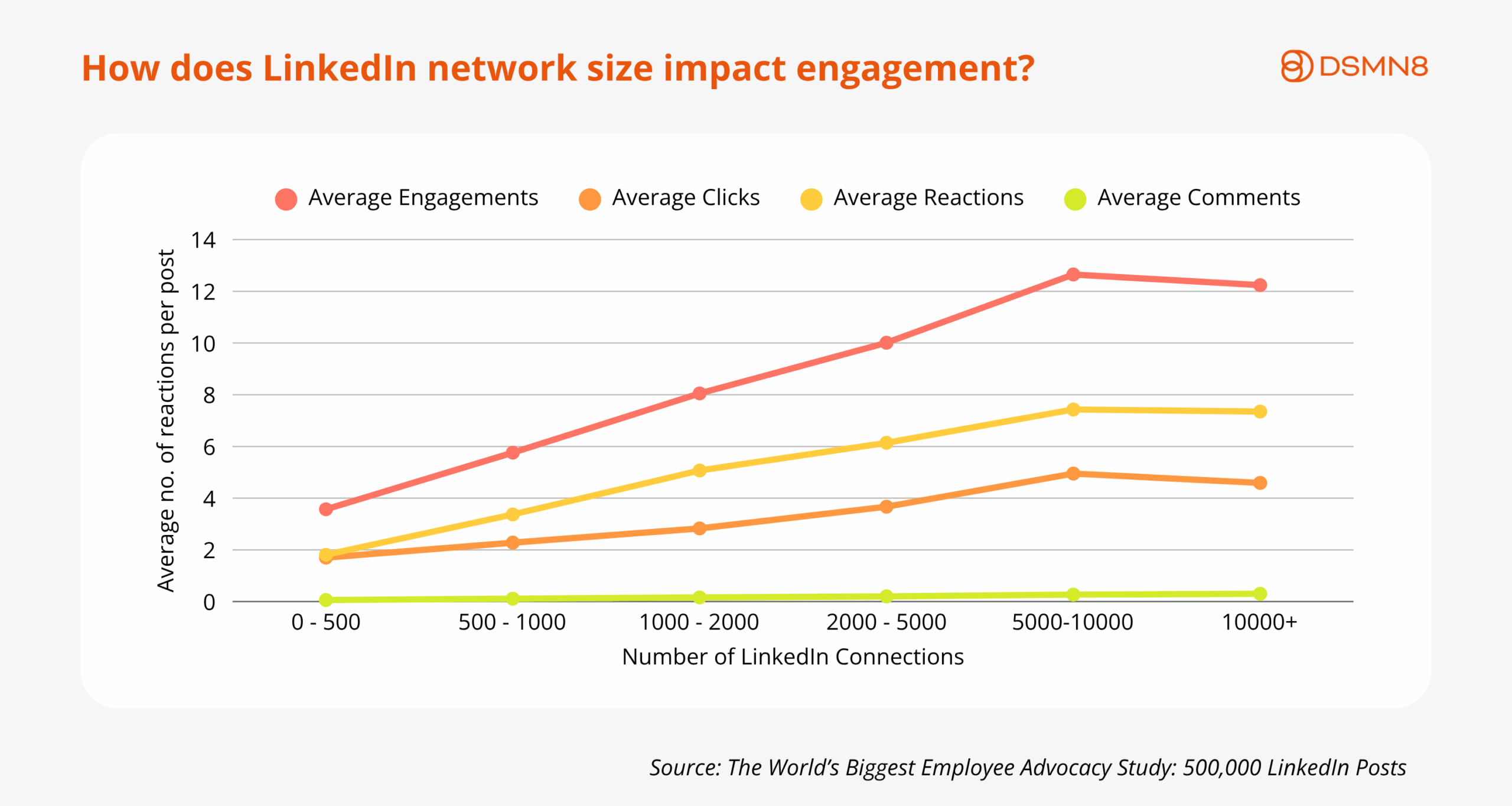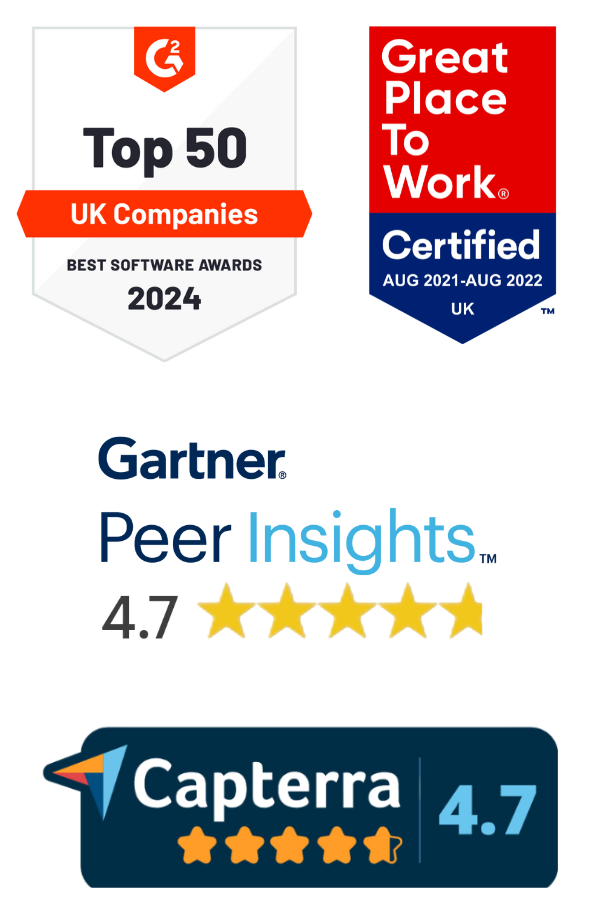
What's on this page:
- The Trust Paradox in an AI-First World.
- Why Employee Advocacy is the Missing Signal.
- The Power of Authentic Connection.
- AI + Advocacy = The Winning Combo.
- How to Blend AI + Advocacy Into Your Content Workflow.
- The Cultural Foundation.
- What Good Looks Like: Five Program Pillars.
- The Future of GTM is Human + AI.
- Additional Resources
AI has rewritten the rulebook for go-to-market (GTM). From campaign automation to predictive insights, today’s tools help campaigns launch up to 60% faster, scale harder, and run 24/7. In fact, MarTech reports that 32% of organizations already have AI fully embedded into their GTM strategies.
But here’s the catch: buyers are drowning in AI-generated noise.
Everyone has access to the new technology, which means differentiation doesn’t come from speed or scale anymore. It comes from trust.
The Trust Paradox in an AI-First World
While executives might believe they’re trusted (90% think so), the reality is that only 30% of consumers actually agree.
And this trust deficit becomes even more pronounced when AI enters the equation.
Yet when Edelman asked employees who they trust most, “my employer” came out on top: 75% said they trust their workplace, and 67% even trust their CEO more than CEOs in general.
The takeaway? In an AI-first GTM world, the brands that win will be the ones that pair machine efficiency with human credibility.
And the most effective way to deliver that credibility is through your employees.
Why Employee Advocacy Is the Missing Signal
Employee advocacy represents the human layer that AI-heavy GTM strategies desperately need.
The numbers tell a compelling story:
- Word-of-mouth reigns supreme: 88-89% of people trust recommendations from people they know (Nielsen).
- Employees have massive reach: On LinkedIn, employees average 10× more connections than company pages (LinkedIn).
- Authenticity drives engagement: Employee-shared posts are perceived as 3× more authentic and can achieve 561% higher reach than brand channels (Forbes).
Rather than being confined to marketing, employee advocacy is a company-wide strategy that equips people at every level to share and champion your brand.
When implemented effectively, employee-shared content can drive a 30% increase in total company engagement, even when only 3% of employees actively share content, according to LinkedIn.
And the highest performers don’t have to be ‘influencers’. In fact, the World’s Biggest Employee Advocacy Study revealed that advocates with 5,000-10,000 connections generated more engagement than those with tens of thousands:
The Power of Authentic Connection
The paradox of AI in GTM is simple: the very efficiency that makes it powerful can also make it predictable.
When every brand is pushing out standardized, automated content, it loses the qualities that actually build trust: human emotion, perspective, and authenticity 😫
That’s why traditional advertising is struggling. Buyers are skeptical of polished corporate comms. What they want is real firsthand experiences and insights from people they trust.
This is where employee advocacy changes the game.
Empowering employees to share their own perspectives doesn’t just boost credibility externally; it lifts engagement, pride, and satisfaction internally too.
The result? A self-reinforcing loop: engaged employees create more authentic advocacy, which strengthens both culture and brand reputation 🤝
AI + Advocacy = The Winning Combo
Even as AI advances, B2B buyers still lean on people for complex decisions. McKinsey found that in-person and human-led channels remain decisive for first-time or high-effort purchases.
The message is clear: AI can scale efficiency, but it can’t replace human connection.
But the strongest GTM strategies don’t pick sides. They combine AI’s efficiency with the human trust signal employees provide.
To get the best of both worlds, adopt a human-in-the-loop approach:
AI is the engine → powering research, first drafts, and smart scheduling.
Employees are the signal → adding credibility, real-world context, and authentic connection.
Together, they create content that’s not only scalable but also believable.
How to Blend AI + Advocacy Into Your Content Workflow
So how do you make sure your GTM doesn’t blur into the sea of AI-generated noise?
Leading organizations are finding the answer in balance: AI for efficiency, employees for authenticity. Here’s how they’re combining both to scale content that people actually trust:
The Cultural Foundation
Before you dive into creating this content machine, it’s crucial to consider your company culture. It really can make or break your program.
A great starting point is grabbing a free competitor analysis review. This will show you how active your team currently are on LinkedIn, which is a key indicator of positive company culture.
Success with advocacy requires building a culture that encourages and rewards participation. Getting leadership involved is one of the best ways to motivate your team.
Companies must provide clear guidelines and training: remember, not every employee is a social media professional.
Recognition, incentives, and gamification can motivate participation, but the foundation must be genuine pride in the organization and its mission.
Want to go deeper on how culture underpins advocacy (even in an AI-driven world)? Check out this podcast episode with Alex Her on AI, Culture & the ROI of Employee Advocacy:
Want to build a culture where advocacy thrives? Enroll in our Free Employee Advocacy Certification Course.
What Good Looks Like: Five Program Pillars
Successful AI-driven employee advocacy programs are built on these foundations:
The Future of GTM is Human + AI
The future of GTM won’t be humans vs. machines; it’ll be about what happens when the two work together.
AI will keep scaling the heavy lifting: automating admin, surfacing insights, and personalizing at speed. That frees people up for what really moves the needle: strategic thinking, creative storytelling, and building deep, empathetic relationships with customers.
For business leaders, the winning playbook looks like this:
1. Adopt a Human-in-the-Loop Approach: Don’t rely solely on AI for decision-making or content creation. Use AI for efficiency and scalability while retaining human oversight for emotional resonance, creative storytelling, and authenticity.
2. Invest in People and Culture: The foundation of successful human-AI GTM is a workplace culture that encourages and rewards employee advocacy. Invest in employee training, provide clear guidelines, and create content that employees are genuinely proud to share.
The convergence of AI and employee advocacy is the next evolution of GTM.
AI gives you speed, scale, and a data-driven approach. Advocacy gives you authenticity, trust, and emotion, the elements algorithms can’t replicate.
The most successful brands won’t use AI to replace human voices. They’ll use it to amplify them 📢
In a world increasingly dominated by artificial intelligence, the most powerful differentiator may just be the most human element of all: your people!
Additional Resources
Ready to start your AI-powered employee advocacy program?
Book a Demo with DSMN8, the #1 user-rated employee advocacy solution on G2.
More on AI and Automating Employee Advocacy:
Emily Neal
SEO and Content Specialist at DSMN8. Emily has 10 years experience blogging, and is a pro at Pinterest Marketing, reaching 1 million monthly views. She’s all about empowering employees to grow their personal brands and become influencers.







